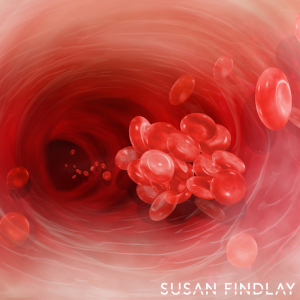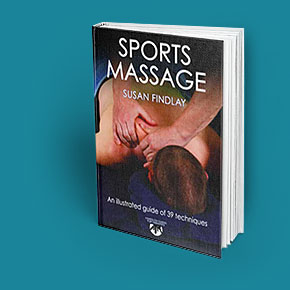Our practice is portrayed as an alternative form of medical treatment – a challenger to conventional means. We have always been up against it: a case of massage therapy versus proven procedures. However, we have seen progress.
We are now a legitimate alternative, or as I would prefer to say, we are a complementary service to conventional medicine. We’re accepted and endorsed globally. It is indeed progress, but we will continue to challenge and exceed our potential. Just as our industry has challenged convention, we must also challenge ourselves. We should ask questions, assess historical methods and dissect practices passed down. As we know, history can dominate modern day interpretation. There are a number of instances in massage therapy where this canbe applied. There is, however, one that springs to mind: the idea that massage speeds up blood circulation.

It is a myth, that has been woven into massage folklore. A ‘broad stroke’ benefit, relayed over generations; firmly ingrained in common belief. That is why, when we now suggest it is simply a myth, people are confused, and almost reluctant to accept that it is anything but the truth. Paul Ingraham captures its generational strength when writing, ‘the profession’s faith in the power of circulation boosting has remained strong for decades, and it’s a microcosm of a broader phenomenon: all kinds of alternative medicines supposedly help people by boosting circulation one way or another.’ (1)
It is unfair to label this entire ‘phenomenon’ as nothing but a myth. There is research that suggests blood flow does increase. For example, in 2014 Andrea Portillo-Soto’s study highlighted that massage increased skin temperature; a rise in temperature ‘theoretically indicates an increase in blood flow to the area.’ (2) As did Hideotoshi Mori and co. in 2004, when their study revealed lumbar massage administration to have some effect on increasing temperature and enhancement of blood flow in local regions (3). Evidence yes, but, there are two somewhat vague words that stand out: ‘theoretically’ and ‘some effect.’ The lack of confidence perhaps epitomises the limited evidence surrounding this debate.
As an experienced massage therapist reading this, you may be asking yourself a few questions: Surely, you are still improving blood flow to the area by being massaged? Are we actually saying massage has no effect on blood flow?
This is understandable. It is always the case when challenging convention. The fact is, there is little evidence to show massage does increase blood rate flow. Research does show a very localised dilation of surface capillaries (redness on the skin after rubbing), but no clinically significant changes to circulation. Ingraham is also quick to point out that a lot of this localised capillary action is in fact ‘superficial, temporary, small, and irrelevant to any of the goals of massage therapy. (4)’ When we mention this sort of a localised temperature increase in a broader context of increased circulation, it can be incredibly misleading. It is probably why this misconception has survived for so many years.
As a massage therapist, we accommodate and nurture a healing process, by increasing fluid and moisture. In turn, this aids the increased blood flow and aids the healing effect. By no means do our methods directly increase circulation.

Confusion is warranted. Addressing it is what the massage community is designed to do. We must try our best to remove common misconceptions and update our understanding. The more we talk as a community, the more likely we are to understand and subsequently modify our messaging to clients. Initiatives like Therapy Live are great ways to stay in touch with the changing massage landscape.
The Massage Collective on Facebook is, again, a great example of this shared community understanding. It supports therapists looking to develop their understanding of massage therapy, and adapt to any changes. I believe that the current state of massage therapy can be effectively summed up by one quote: “I did what I knew then. Now I know better, I do better.” We must always look to improve and challenge what we know.
This is by no means an anti-massage article. As a passionate massage therapist, that is not the message I want to relay. There are still numerous advantages associated with massage therapy. This blog simply identifies the changing mechanisms by which massage works are different – an attempt to tidy our understanding of the effects. With this understanding and new research, we can now say that massage is a largely ineffective way to increase blood flow. If a client is having a massage to improve or increase blood flow, then it is best to inform that there are more appropriate options available – most notably light exercise (5). With all of this in mind, it is important to remember a few things.
Just because it does not increase blood flow, it doesn’t mean it has no effect whatsoever. Like most things to do with our industry, concrete evidence is always lacking. It is, however, more likely that massage relaxes circulation, as opposed to increase it. As Ingraham suggests ‘when we relax, neurological and hormonal forces divert blood away from our muscles and towards the internal organs and skin.’ (6) The opposite happens when we are excited, adrenalin racing. The fact that massage is more accustomed to slowing down blood flow, to increase it, it must fight the actual effect (7).
Now we know blood flow cannot be increased by massage, we must also question what bearings this has on deep vein thrombosis (DVT)? There is a difference between DVT and connected tissue (CT). The behavioural properties are not the same; the impact and relationship is different. Because DVTs aren’t connected, we are able to dislodge them with compression. It is important to remember that there is a difference between affecting blood flow and manually dislodging clots.
That is not to say we must not remain cautious with DVTs. A substantial clot should be carefully avoided. Any tampering or deep movement in this particular area can have severe – sometimes deadly – consequences. Of course, this varies and the majority are likely to be minor.
Although, there is an issue right now. Ruth Werner has played a major role in keeping our industry up-to-date with the COVID-19 situation. Until now, as she explains, ‘our main goal has been minimising the risk of catching or spreading the virus in a massage therapy setting.’ Now, we face a bigger challenge: ‘the possibility of contributing to blood-clotting complications by way of hands-on bodywork (8)’. DVT is a common condition within COVID-19 patients. As Werner points out, young people under the age of 50 are dying from the virus because of heart attacks and strokes, caused by clots (9). In this context, there are now potentially a large proportion of people considered ‘high risk’ for DVT. With this in mind, both Werner and Ingraham recommend we avoid treating anyone with COVID symptoms, to avoid aggravating these clots (10) (11).
We must also be cautious of how we label our services. As massage therapists, we do not ‘detoxify’ the tissue. That is the job of the liver, which we support; by no means do we directly detoxify. The misconception that DOMS are related to lactic acid is also worth rectifying. Within 30 minutes after exercise, all signs of acid have vacated the body – they have no bearing on aching arms 2 days later. This is why it is vital that we stop referring to certain massage methods as ‘lymphatic drainage.’ Lymph is moved entirely by mechanical stimulation and muscle contraction. We do not enhance this process. And we should not claim to.
There is a growing pressure within massage therapy to offer every service out there. We are expecting too much of ourselves, and will happily say we provide a type of therapy because our biggest competitor is doing so – even when it may be completely ineffective. Remain true to your skill set, and communicate with your client. This vital understanding is often neglected; replaced by a superficial physical skillset. Remember, the best way to treat pain, is by understanding it.
I hope this blog has cleared up some confusion. As new research is announced, there is sometimes a disconnect between old and modern types of practice – the traditionalists vs. the modernists. I must reiterate that our hands are still our most valuable asset. Just because they do not increase blood flow, it doesn’t mean they do not shape the environment they touch.
We cannot lengthen or change the shape of tissue; we can change how it operates. For instance, we can help reintroduce the bounce – encouraging ground substance or function to return. It’s a case of always looking on the bright side. Yes, we may have just debunked a prevalent myth which, until now, claimed a trusted benefit of massage. But we are also evolving. We now know far more about the psychological effects of massage than ever before. We are here to support new learning and accept change. This is the only way to challenge convention.
References
1. Ingraham, P. Article: PainScience.com. 2019. Does Massage Increase Circulation? [online], available at: https://www.painscience.com/articles/massage-and-circulation.php [accessed 30 June 2020].
2. Portillo-Soto, A. et al. 2014. Comparison of Blood Flow Changes with Soft Tissue Mobilization and Massage Therapy. [online], available at: https://doi.org/10.1089/acm.2014.0160 [accessed 30 June 2020].
3. Mori H, Ohsawa H, Tanaka TH, Taniwaki E, Leisman G, Nishijo K. 2004. Effect of massage on blood flow and muscle fatigue following isometric lumbar exercise. Med Sci Monit. [online], available at: https://pubmed.ncbi.nlm.nih.gov/15114265/ [accessed 30 June 2020].
4. Ingraham, P. Article: PainScience.com. 2019. Does Massage Increase Circulation?
5. Shoemaker, J., Tiidus, P. M., Mader, R. 1997. Failure of manual massage to alter limb blood flow: measures by Doppler ultrasound, in Medicine & Science in Sports & Exercise: Volume 29 – Issue 5. [online], available at: https://journals.lww.com/acsm-msse/Fulltext/1997/05000/Failure_of_manual_massage_to_alter_limb_blood.4.aspx [accessed 30 June 2020].
6. Ingraham, P. Article: PainScience.com. 2019. Does Massage Increase Circulation?
7. ibid.
8. Abmp. Ruth Werner Article. 2020. COVID-19-Related Coagulopathy
Blood Clotting—Through Thick and Thin, [online], available at: https://www.abmp.com/updates/blog-posts/covid-19-related-coagulopathy [accessed 30 June 2020].
9. ibid.
10. ibid.
11. Ingraham, P. Article: PainScience.com. 2019. Does Massage Increase Circulation?

